The Excel’s Format Cells dialog box that appears below is a tool used to modify the appearance of cells.

The Format Cells dialog box has several tabs that allow you to format many aspects of selected cells, such as the number of decimals of numbers, alignment of text within a cell, font style, border around cells, and so on.
We can open the Format Cells dialog box in various ways. This tutorial shows eleven techniques for opening the Format Cells dialog box in Excel.
Methods For Opening the Format Cells Dialog Box in Excel
We can access the Format Cells dialog box using the methods enumerated below.
Method #1: Use the Keyboard Shortcut Ctrl + 1 to Open the Format Cells Dialog Box
The quickest way to open the Format Cells dialog box is to use the keyboard shortcut Ctrl + 1 using the following steps:
- Select a cell or cell range you want to format.
- Press Ctrl + 1 (press and hold down the Ctrl key, then press the number 1)
Method #2: Use the Right-click Menu to Open the Format Cells Dialog Box
We can open the Format Cells dialog box using the right-click menu in the following way:
- Select a cell or a cell range you want to format.
- Right-click the selected range.
- Choose Format Cells on the shortcut menu that appears.
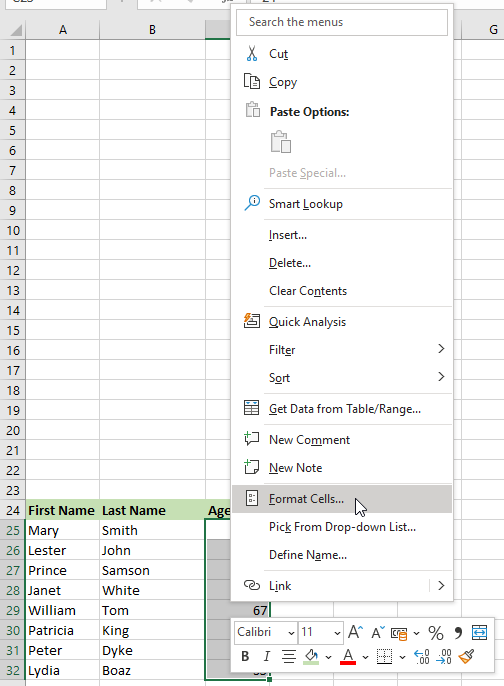
Method #3: Use the Excel Ribbon to Open the Format Cells Dialog Box
You can access the Format Cells dialog box via the Ribbon in the following ways:
Way #1: Use the Number Format Drop-down
- Select the cell or cell range you want to format.
- On the Home tab, in the Number group, open the Number Format drop-down and choose More Number Formats at the bottom of the list.
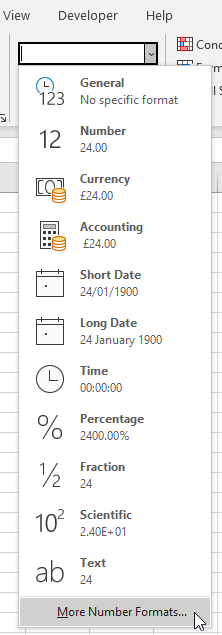
Way #2: Use the Number Format Dialog Launcher
- Select the cell or cell range you want to format.
- On the Home tab, click the Number Format dialog launcher in the bottom right corner of the Number group.

Way #3: Use the Font Settings Dialog Launcher
- Select the cell or cell range you want to format.
- On the Home tab, click the Font Settings dialog launcher in the bottom right corner of the Font group.
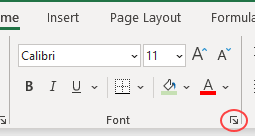
Way #4: Use the Keyboard Shortcut Ctrl + Shift + F
- Select the cell or cell range you want to format.
- Press Ctrl + Shift + F (press and hold down the Ctrl key, press and hold down the Shift key, and press key F)
Way #5: Use the Alignment Settings Dialog Launcher
- Select the cell or cell range you want to format.
- On the Home tab, click the Alignment Settings dialog launcher in the bottom right corner of the Alignment group.
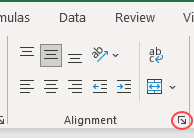
Way #6: Use the Format Drop-down
- Select the cell or cell range you want to format.
- On the Home tab, open the Format drop-down in the Cells group and select Format Cells at the bottom of the list.
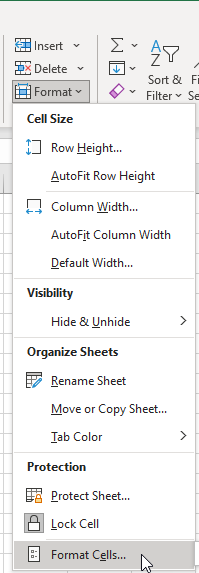
Way #7: Use the Borders Drop-down
- Select the cell or cell range you want to format.
- On the Home tab, in the Font group, open the Borders drop-down and choose More Borders at the bottom of the list.
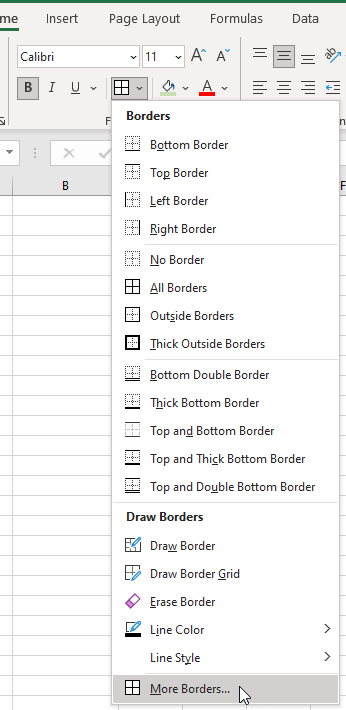
Way #8: Use the Orientation Drop-down
- Select the cell or cell range you want to format.
- On the Home tab, in the Alignment group, open the Orientation drop-down and choose Format Cell Alignment at the bottom of the list.
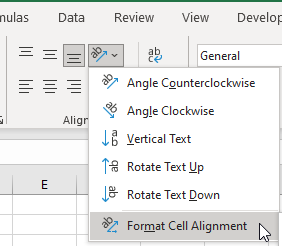
Way #9: Use the Accounting Number Format Drop-down
- Select the cell or cell range you want to format.
- On the Home tab, open the Accounting Number Format drop-down in the Number group and choose More Accounting Formats at the bottom of the list.
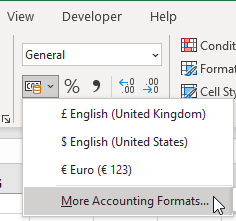
Conclusion
The Format Cells dialog box in Microsoft Excel is a feature used to adjust the appearance of cells. This tutorial showed eleven methods for opening the Format Cells dialog box in Excel. The techniques involve keyboard shortcuts, context menus, drop-downs, and dialog launchers. We hope you found the tutorial helpful.
